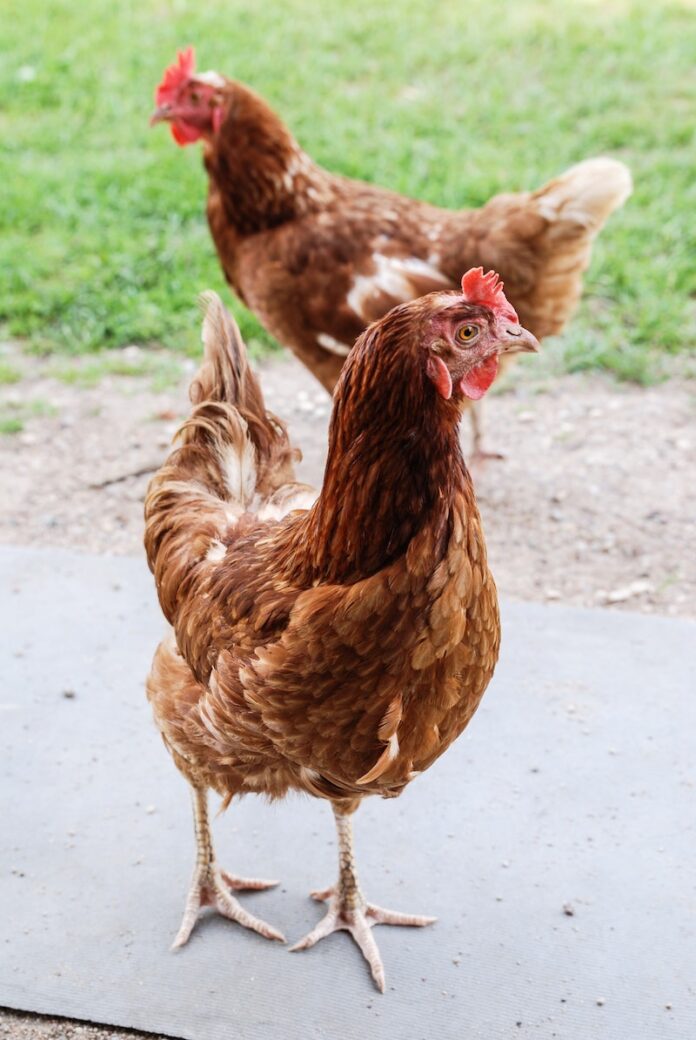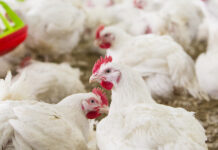
USPOULTRY and the USPOULTRY Foundation announced the completion of a funded research project at Purdue University in which researchers investigated how laying hens visually perceive the resources in cage-free housing. The research was made possible in part by an endowing Foundation gift from MPS Egg Farms and proceeds from the International Poultry Expo, part of the International Production & Processing Expo (IPPE). The research is part of the Association’s comprehensive research program encompassing all phases of poultry and egg production and processing.
Dr. Darrin Karcher, Department of Animal Sciences, Purdue University, West Lafayette, Ind.
Project #F095: How Does Laying Hens’ Visual Perception Affect Resource Usage in Cage-Free Housing?
Dr. Darrin Karcher and colleagues at Purdue University recently completed a research project that investigated how lighting systems can impact hens’ visual perception of their housing environment or of their conspecifics. Researchers were able to show that there were significant differences in the visual systems of brown and white chickens at all ages. Modeling also revealed that the visual environment is often homogeneous and undistinctive, except when highly colored objects are present, potentially increasing the risk of injury to the hens as they move through the aviary.
Geneticists have been trying, with little success, to determine and select egg layer strains that will perform well in cage-free production systems because there are numerous unknown factors which influence a hens’ performance. The unknown factors have resulted in there being no single strain that can perform consistently. Companies that have transitioned to cage-free production are faced with various management and welfare issues including keel bone damage, mislaid eggs and feet pecking. These new welfare issues may be due to the hens’ inadequate or inaccurate perception of their environment due to inappropriate lighting. No previous studies in poultry have determined how lighting systems can impact hens’ visual perception of their housing environment or of their conspecifics.
This project sought to achieve the following objectives:
1. develop a chicken-specific visual model through the collection of physiological information,
2. evaluate lighting systems for spectral properties among different cage-free housing in commercial settings, and
3. explore the relationship between avian visual perception and flock welfare outcomes. Initial data to develop the visual models was collected from laying hens housed at Purdue University. Researchers partnered with a commercial egg producer to collect light spectra during production in a cage-free housing facility. Models were executed to identify whether high or low conspicuousness of different objects from the hens’ viewpoint could be related with variations in welfare indicators under different cage-free housing and lighting systems.
Due to the highly pathogenic avian influenza outbreak across the country during the project period, researchers were unable to visit as many facilities as addressed in objective 2 or assess the welfare indicators initially proposed in objective 3. However, they were able to fully develop the visual models from two strains of chickens (brown and white) at three different ages (17, 25, and 85 weeks of age) to model the visual environment at two different facilities.
The study showed that there are significant differences in the visual systems of brown and white chickens at all ages. The ability of light to transmit through the eye of both brown and white strains decreased with age, reducing the amount of ultraviolet light that reaches the retina. The relative density of cells in the retina consistently differed between the brown and white strains. The sensitivity of cells in the retina did not change with age, however there were unexpected differences found between the brown and white strains.
In cage-free egg laying facilities, modeling revealed that the visual environment is often homogeneous and undistinctive, except when highly colored objects are present, potentially increasing the risk of injury to the hens as they move through the aviary. The ambient light in the egg laying facility impacts how conspicuous objects and substrates are. In certain ambient light conditions, the strain and age of the laying hens determined if an object was easily perceived. Overall, variability in the visual systems of different strains and ages of laying hens should be considered when determining aspects of the visual environments that are utilized in the industry.
The research summary can be found on the USPOULTRY website. Information on other Association research may also be obtained by visiting the USPOULTRY website, www.uspoultry.org.
















